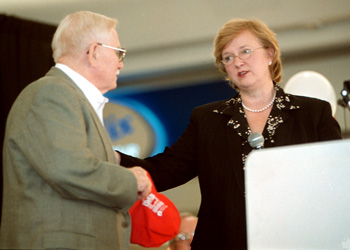
New radioactive seed used to treat prostate cancer
A Vanderbilt-Ingram Cancer Center team recently became the first to use a new type of “radioactive seed” to treat a patient with prostate cancer. But Vanderbilt’s role in the development and use of the new implant began more than a year ago, with a key step on which everything else is built.
Medical physicist Dennis Duggan, Ph.D., associate professor of Radiation Oncology, independently calculated and measured the seeds’ radiation dose output before the manufacturer began production of the pellets. These detailed calculations are critical for proper placement within the prostate and were required before the seeds received approval by the Food and Drug Administration.
“The reason I enjoy this branch of physics is that everything we do, in research and in daily clinical work, really helps patients in very understandable ways,” Duggan said. “Everyone counts on the dosimetry being done right in the first place.”
In an outpatient procedure, dozens of small radioactive pellets are permanently implanted, under ultrasound guidance, directly into the cancerous prostate. Each seed is about half the size of a grain of rice. Together, they deliver a customized dose and pattern of radiation to eradicate the malignancy.
The procedure is done by a urologic surgeon (Dr. Michael Cookson, assistant professor of Urologic Surgery), along with a radiation oncologist (Dr. Ming Teng, assistant professor of Radiation Oncology), and a medical physicist (Charles Coffey, Ph.D., professor of Radiation Oncology and Physics).
The new seeds, sold under the trademark I-Plant, are manufactured using a patented process that allows the pellets to be constructed and stored in a non-radioactive state until they are needed. This reduces the hazards of the manufacturing process and allows large quantities of the seed cores to be inventoried until needed, says the manufacturer, Massachusetts-based Implant Science Corp. When needed, the seeds are sent to a nuclear reactor for activation.
The process is also less expensive and may result in lower cost to the patient, Duggan said.
The technique of placing radioactive sources in or near tissue to deliver radiation therapy is called brachytherapy. Duggan, Coffey and their Radiation Oncology colleagues have also been working with the company to develop new radiation sources for brachytherapy to prevent restenosis of the coronary arteries after angioplasty.













